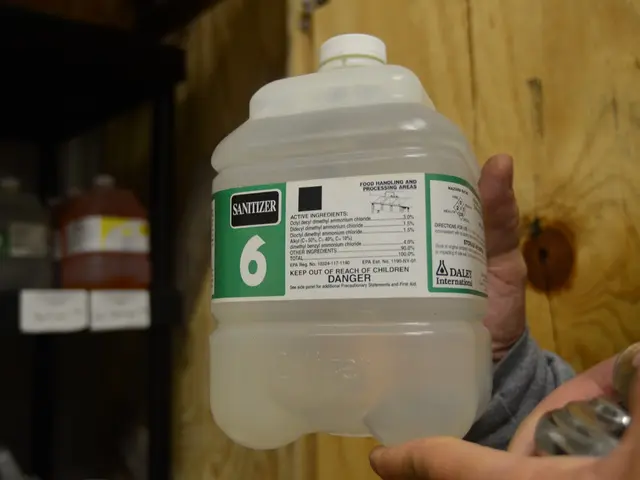Possible reasons for experiencing penile pain explained
In the realm of men's health, persistent penile pain can be a cause for concern. While Peyronie's disease and penile fractures are well-known sources of discomfort, there are other underlying issues that may be at play.
Peyronie's disease, characterised by an abnormal curvature of the penis due to scar tissue in the tunica albuginea, is a common cause of penis pain. This condition can occur in men of any age, including young men, and is estimated to affect about one in 20 men at some point in their lives. The exact cause of Peyronie's disease remains unknown.
Penile fractures, on the other hand, are a rarer source of penis pain. They occur due to trauma to the erect penis, which may rupture the lining of one of the two cylinders in the penis responsible for erections. Men who experience penile fractures report hearing a popping sound, then experiencing severe pain, swelling, and dark bruising of the penis. These are medical emergencies that can lead to permanent erectile dysfunction if not treated immediately.
Besides Peyronie's disease and penile fractures, common causes of persistent penis pain include pelvic floor dysfunction, prostatitis or chronic pelvic pain syndrome, balanitis and phimosis, priapism, urinary tract issues, and nerve entrapment or neurological causes.
Pelvic floor dysfunction, for instance, can be caused by muscle tension, weakness, or injury in the pelvic floor. This can cause penile or scrotal pain, often accompanied by urinary symptoms, pain during or after ejaculation, and erectile dysfunction. Prostatitis or chronic pelvic pain syndrome, on the other hand, is inflammation or infection of the prostate, which can manifest as persistent penile pain and pelvic floor-related symptoms.
Balanitis, an inflammation of the foreskin or glans penis, often due to infection or poor hygiene, can cause ongoing discomfort or pain. Priapism, a prolonged, painful erection not related to sexual arousal, can also cause lasting pain if not treated promptly. Urinary tract issues, such as pain during urination or urinary incontinence, may contribute to penile pain. Lastly, conditions that affect nerve supply to the penis may cause persistent pain.
These causes often overlap with symptoms related to urinary, bowel, or sexual dysfunction and may require multidisciplinary evaluation, including pelvic floor assessment, urology exams, and possibly imaging or urodynamic studies.
Uncircumcised men sometimes develop a painful condition called phimosis, which means the foreskin cannot be fully retracted and may require corrective surgery. Older men are considerably more likely to develop phimosis. Severe cases of Peyronie's disease, which inhibit intercourse, are intervened by physicians in only 1% to 2% of men.
In summary, persistent penile pain can arise from pelvic floor disorders, prostatitis, infections like balanitis, vascular problems like priapism, and neurological factors, beyond the well-known Peyronie's disease and penile fractures. Proper diagnosis involves comprehensive clinical evaluation focused on these diverse potential causes.
In the realm of health and wellness, persistent penile pain may be attributable to a variety of medical conditions rather than just Peyronie's disease and penile fractures. For instance, pelvic floor dysfunction and prostatitis can lead to penile pain, as can balanitis, urinary tract issues, priapism, and nerve entrapment or neurological causes.
Considering health and medical-conditions, persistent penis pain may be indicative of several underlying issues such as pelvic floor dysfunction, prostatitis, balanitis, priapism, urinary tract issues, and neurological factors.




